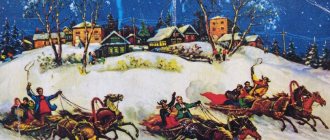New Year in Russia is considered one of the most beloved holidays, so local residents celebrate this winter celebration on a grand scale, sparing no effort, time or money. Over the centuries, the country has formed its own special traditions characteristic of the New Year; today they have been supplemented by modern customs that came to Russia from other nations.
New Year customs in Russia
Who invented the New Year - the history of the holiday
The exact moment when the idea of marking the beginning of the Earth's orbit around the Sun appeared is unknown. According to historians, this happened 3 thousand years BC. And the ancient ritual has survived to this day.
The first such traditions appeared in Mesopotamia. They combined the Vernal Equinox with the celebration of the supreme god Marduk. The festivities began in March and lasted two weeks. Carnivals, costumed processions, and food and alcoholic drinks were organized for residents. It was forbidden to work. This holiday successfully “coincided” with the period of the flood of the Tigris and Euphrates.
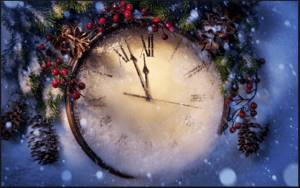
Through assimilation, the tradition of celebrating the spring equinox passed to the Egyptians. They had organized celebrations of the Nile flood before. Which looks like a sacrifice in honor of the fertility gods. Because the mud that remained in the fields ensured the harvest. The people of Egypt filled bottles with water from the river because they thought it was magical. Celebrations took place in the evening and lasted until the morning.
The tradition passed on to a young civilization - the Greeks. Their new year began on June 22, the day of the summer solstice. The holiday was dedicated to the god of winemaking, Dionysus. Time in the ancient world was counted from the moment of the first Olympic Games.
The Jews celebrated Rosh Hashanah. Its date is floating and covers the last two weeks of September, calculated according to the lunar cycle. It is believed that on this day a person’s fate for the entire next year is determined. Therefore, ten days after Judaism they are engaged in spiritual self-development, repentance and prayers.
Can a holiday be considered religious? Yes. For many peoples, a new revolution of the planet around the Sun coincides with the honoring of God or the beginning of Lent.
The Bolsheviks pulled Russia closer to Europe
By the beginning of the 20th century, the difference between the calendars reached 13 days. That is why Christmas was celebrated both here and in Europe on December 25, but in Russia this very December 25 came later - when in Europe it was already January 7.
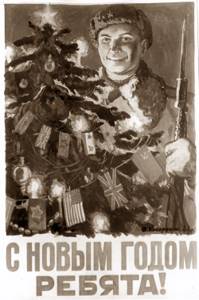
Soviet poster Photo: www.russianlook.com
Frankly speaking, this chrono-religious mess did not greatly help relations between Russia and Europe, from correspondence to trade issues.
However, no one dared to violate the canons, until the appearance of the Bolshevik Party and Vladimir Ilyich Lenin on the historical stage. In February 1918, by decree, the revolutionaries introduced the Gregorian calendar into Russia and eliminated the lag behind Europe.
It is important to note that this reform was purely civil, because the relations of the Bolsheviks with the Orthodox Church were, to put it mildly, unfriendly.
This is how the conflict that exists to this day arose - the state and the main religious denomination live according to the same chronology, but according to different calendars.
This discrepancy leads to an interesting incident: the New Year in the country begins a week before Christmas and, strictly speaking, falls on the Nativity Fast.
And here the question arises among the people: which one is greater: Russian or Orthodox? As an Orthodox Christian, he must spend New Year's Eve in prayer and abstinence, and as a Russian, he must surrender to the power of champagne, tangerines, Olivier salad and crazy dancing under the Christmas tree.
As experience shows, Russians still make up the overwhelming majority in the country.
Why January 1st - features of chronology
In Persia, the celebration of Navruz was celebrated, which marked the arrival of the warm season and spring field work. Its name translates as “new day”. It was used to measure the beginning of the agricultural year.
The date of celebration was calculated by the movement of the Sun, and not by the phases of the Moon. Therefore, there are discrepancies between the Muslim and Persian dates.
But why is the New Year on January 1 now? Let’s ask the ancient Romans about this.
Julian calendar
The famous Emperor Julius Caesar in 46 BC. introduced a calendar that began in January. Before this, following the example of our older comrades, the New Year was celebrated at the beginning of March, combined with the spring equinox.
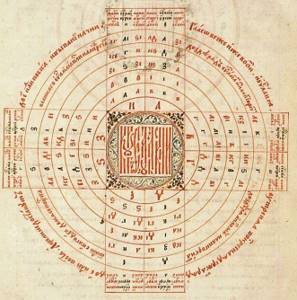
Julian calendar
The first month was named after the two-faced god Janus. Some look to the past, while others try to discern the future. All nations that were part of the Roman Empire began to count days from the new date. January 1, 45 coincided with the new moon - the lunar and solar cycles were synchronized for a while.
From Creation to New Years
Article on the topic
Wild, but cute. How the toys on the Christmas trees of Soviet citizens changed. However, by the time Christianity appeared in Rus', Christian motives replaced the forces of nature. Byzantine scholars believed that on Friday, March 1, the Lord completed the process of Creation. You understand that this is a significant event and quite suitable for a New Year’s celebration.
However, back in 325, at the First Ecumenical Council, it was decided to start the new year on September 1 in memory of the fact that in 312 the Byzantine Emperor Constantine the Great granted Christians complete freedom to practice their faith.
It is also believed that it was on September 1, according to the Julian calendar, that Jesus Christ read Isaiah’s prophecy about the coming of a favorable summer in his hometown of Nazareth. In this reading, the Byzantines saw His indication of the celebration of New Year's Day.
Thus, the New Year arose, or the Church New Year, which was celebrated on September 1.
But introducing a new tradition in Rus' turned out to be not so easy. In 1348, the Russian Church, relying on the decisions of the Council of Nicaea, decided to celebrate the New Year on September 1. And our ancestors’ love for holidays was expressed in the fact that for decades the New Year on March 1 was successfully combined with the New Year on September 1. It was only in 1492 that Ivan the Third finally established September 1 as the only New Year's holiday. By the way, September 1 as the beginning of the New Year has not disappeared from our lives to this day. It is from church tradition that the school year begins on September 1.
Where does the year begin?
Taking into account the conventional division of the planet into time zones, the holiday is first celebrated on the islands in the Pacific Ocean, in the Republic of Kiribati. And the last to close the circle are the residents of American Samoa. But not everywhere New Year is celebrated on January 1:
- Between the 21st and the end of February, the opening of the calendar cycle is celebrated in China.
- Iran continues the traditions of its ancestors and focuses on the lunar calendar, so the celebration falls on March 21-22.
- In Bangladesh, the year starts on April 14th.
- The mentioned Rosh Hashan is 163 days after Passover (the holiday in honor of the exodus of the Jews from Egypt). That is, the New Year is celebrated in September.
Despite the fact that we now live according to the Gregorian calendar, in some countries they continue to re-celebrate the beginning of the Earth's revolution around the Sun 14 days after the official New Year. This is done in the states that were part of the USSR, as well as in Serbia and Switzerland.
Tatyana Polshikova, 43 years old, hometown - Temirtau
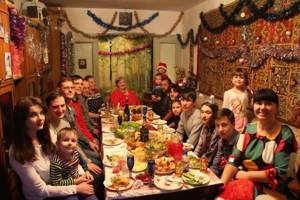
Our tradition of celebrating the New Year in large numbers has continued since 1986.
We're going to my mom's.
The great-grandmother, grandmother and her family gathered at one table. Then the children grew up and grandchildren appeared. And four generations have already celebrated the New Year together. Celebrating a holiday in one place is more fun and convenient than visiting everyone.
At the table we can say kind words to all relatives at once, and not to each one separately, as on a birthday.
We can give gifts to all families at once, someone can prepare a performance. We choose gifts in advance, the children learn poems. Then we gather near the Christmas tree, and one of the relatives dresses up as Father Frost and the Snow Maiden, the children perform and take part in games. New Year's music is playing on the TV in the background. On New Year's Eve we make wishes and write them down on a piece of paper.
Grandmother prepares the festive table, and everyone also brings several dishes with them. At the table we sum up the results of the year and remember funny stories.
Others prepare New Year's games and quizzes for children. There was a time when our whole family played “Field of Miracles”. It is important to us that not only adults, but also children have fun. And so that they feel like they are part of a big family. That's why we do everything together. Other holidays do not have such an atmosphere.
After 12 o'clock at night we go outside and watch the fireworks. We play snowballs in the yard and have fun.
There is a tradition that depends on the weather - in order to spend the New Year holidays usefully, we go out into nature. In the recreation area we go sledding, roll around in the snow, and have a family game of Crocodile. In nature, family friends with children and acquaintances join us. Let's plunge into the atmosphere of a fairy tale and breathe fresh air. And such a big company gathers.
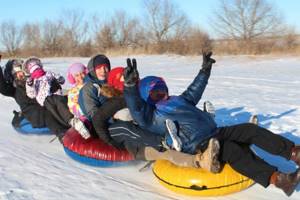
New Year is primarily a holiday for children to maintain a magical feeling
New Year is primarily a holiday for children to maintain a magical feeling.
Everyone should give each other gifts to make their little dreams come true. And only in the family does a special atmosphere of warmth and kindness remain. Celebrating the New Year with your closest ones, you realize that you have a large and friendly family. There are always people nearby who love and support you.
History of the holiday in Russia

The first mention of the celebration is found in the “Parisian Muscovite Dictionary,” dating back to the sixteenth century. The year began on the first of March and ended on February 28 (29). But since 1492, which became a turning point in many industries, the date of the holiday has been moved to September 1.
Before 1700
New Year traditions were observed by both the common people and the authorities. A richly decorated platform for icons was installed on the cathedral square, candles were lit and silver bowls were placed for holy water. They also prepared places for the king and the patriarch.
People dressed in gilded robes, and the solemn procession was accompanied by the ringing of bells. The monarch always kissed the Bible and holy images and made a speech. After which there was a church service.
Everyone who was in the square wished each other a Happy New Year and bowed to the king. At the end of the official part, the sovereign went to mass, and Cathedral Square gradually became empty.
After the appearance of Peter Alekseevich on the throne, the New Year celebration was moved to January 1. But this date was determined according to the Julian calendar. The country lagged behind the rest of civilized Europe by 10 days. By 1918, the gap had increased to 14, and with the advent of Soviet power, the Gregorian calendar was established.
USSR times
The government decree gave rise to two holidays - New Year and Old New Year. At that time, January 1 was a secular holiday that had lost its religious meaning. But Christmas remained, which revived the tradition of decorating houses with fir branches or decorating entire trees.
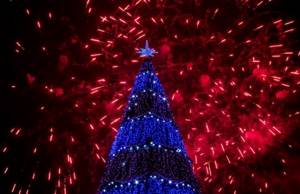
This continued until 1929. Then celebrating Christmas was banned, and New Year ceased to be a public holiday and became a regular working day. But there were requests for the return of the celebration.
And the government of the USSR gave in; at the end of December 1947, a decree was issued assigning January 1 the status of a day off. And since 1992, the 2nd has become a holiday.
Russian New Year traditions
Russian New Year traditions Where to start preparing for the New Year? Maybe to learn more about this wonderful holiday with your children. “Where did Father Frost and Snow Maiden come from when our ancestors celebrated the New Year, what were the first Christmas tree decorations in Rus'?” – you will find answers to these and other questions in the article “Tell your children about the New Year.” And, of course, Russian New Year's tales! How the New Year was celebrated in Rus' In Rus', the New Year for several centuries began on March 1, with the spring awakening of nature, because spring is a symbol of the beginning of a new life. Later, the celebration was moved to September 1, since it was on this day that the harvest ended. The New Year was celebrated very solemnly, on Red Square in the presence of the Tsar. The Patriarch sprinkled holy water on the assembled people and wished them a Happy New Year. The bells were ringing. In 1699, the New Year was celebrated for the last time on September 1; in 1700, by decree of Peter I, the New Year began to be celebrated as in Europe - at midnight on January 1. On New Year's Eve, people held festivities, lit bonfires, exchanged congratulations, set off fireworks, set off firecrackers, put up a Christmas tree in every house or decorated the house with fir branches. It was then that Father Frost appeared - as a replacement for the European Santa Claus. The story of Santa Claus Tell your children about the New Year. The prototype of Santa Claus was found in Russian fairy tales - Grandfather Frost Red Nose, Grandfather Treskun, Morozko - the king of all the winter months - a village old man dressed in a sheepskin coat with a red nose. (In contrast to the Western European Santa Claus, who even at the beginning of the 20th century was often depicted as a monk, dressed in a brown cassock and belted with a rope.) It was believed that Frost lives in an ice hut in the forest and gives gifts to those who look at him. In the Middle Ages, people in villages even “fed” Frost to appease him. The head of the family himself went out onto the porch with a spoonful of jelly. Now Santa Claus lives in Veliky Ustyug (Vologda region). You can go visit him or write a letter, here is the address: 162340, Veliky Ustyug, Santa Claus. The story of the Snow Maiden Without the Snow Maiden, it is difficult to imagine a New Year's holiday. In Russian fairy tales, Snegurochka or Snegurushka is the name of a girl who was molded from snow by an old man and an old woman, and who melted in the spring after jumping over a fire. There are many versions of the tale. Here's one of them. Tell the children about the New Year Snegurochka Once upon a time there lived an old man and an old woman. We lived well, amicably. Everything would be fine, but one misfortune - they didn’t have children. Now the snowy winter has come, there are snowdrifts up to the waist, the children pour out into the street to play, and the old man and the old woman look at them from the window and think about their grief. “Well, old woman,” says the old man, “let’s make ourselves a daughter out of snow.” “Come on,” says the old woman. The old man put on his hat, they went out into the garden and began to sculpt a daughter out of the snow. They rolled a snowball, fitted the arms and legs, and placed a snowy head on top. The old man sculpted a nose, mouth, and chin. Lo and behold, the Snow Maiden’s lips turned pink and her eyes opened; she looks at the old people and smiles. Then she nodded her head, moved her arms and legs, shook off the snow - and a living girl came out of the snowdrift. The old people were delighted and brought her to the hut. They look at her and can’t stop admiring her. And the old people’s daughter began to grow by leaps and bounds; every day it becomes more and more beautiful. She herself is as white as snow, her braid is brown to the waist, but there is no blush at all. The old people are not overjoyed at their daughter; they dote on her. My daughter is growing up smart, smart, and cheerful. Affectionate and friendly with everyone. And the Snow Maiden’s work is progressing in her hands, and when she sings a song, you will be heard. Winter has passed. The spring sun has begun to warm up. The grass in the thawed patches turned green and the larks began to sing. And the Snow Maiden suddenly became sad. - What's wrong with you, daughter? - asks the old man. - Why have you become so sad? Or can't you? “Nothing, father, nothing, mother, I’m healthy.” The last snow has melted, flowers have bloomed in the meadows, and birds have flown in. And the Snow Maiden is becoming sadder and more silent day by day. Hiding from the sun. All she needs is some shade and some cool air, or even better, some rain. Once a black cloud moved in, large hail fell. The Snow Maiden rejoiced at the hail, like rolling pearls. And when the sun came out again and the hail melted, the Snow Maiden began to cry, so bitterly, like a sister by a brother. After spring, summer came. The girls gathered for a walk in the grove, they called Snegurochka. - Come with us, Snow Maiden, for a walk in the forest, sing songs, dance. The Snow Maiden did not want to go into the forest, but the old woman persuaded her. - Go, daughter, have fun with your friends! The girls and the Snow Maiden came to the forest. They began to collect flowers, weave wreaths, sing songs, and lead round dances. Only Snow Maiden is still sad. And as soon as it got light, they gathered some brushwood, built a fire, and started jumping over the fire one after another. Behind everyone, the Snow Maiden stood up. She ran in her turn after her friends. She jumped over the fire and suddenly melted and turned into a white cloud. A cloud rose high and disappeared in the sky. All the girlfriends heard was something plaintively moaning behind them: “Aw!” They turned around, but the Snow Maiden was not there. They began to call her. - Ay, ay, Senugrushka! Only the echo in the forest responded to them. New Year's Snow Maiden is the granddaughter of Father Frost, who helps him give gifts to children and organize a real holiday. How our ancestors decorated the Christmas tree. The very first New Year's toys were edible: sweets, apples, nuts. Then Christmas tree decorations made of fabric, straw, colored ribbons appeared, and later - from paper and foil. Glass toys and real New Year's balls began to be made only in the 19th century. Do you know why on New Year’s Day people decorate the Christmas tree with golden and silver rain? The Tale of the New Year's Tree It was a long time ago. There was a decorated Christmas tree in a closed room on the night before the New Year. All covered in beads, multi-colored paper chains, and small glass stars. The tree was locked so that children would not see it ahead of time. But many other inhabitants of the house still saw her. A fat gray cat saw her with his big green eyes. And the little gray mouse, who was afraid of cats, also looked at the beautiful Christmas tree with one eye when no one was in the room. But there was someone else who didn’t have time to look at the New Year tree. It was a small spider. He was not allowed to get out of his modest corner behind the closet. The fact is that the housewife drove all the spiders out of the room before the holiday, and he miraculously hid in a dark corner. But the spider also wanted to see the Christmas tree, and therefore went to Santa Claus and said: “Everyone has already seen the New Year tree, but we spiders were kicked out of the house. But we also want to look at the festive forest beauty!” And Santa Claus took pity on the spiders. He quietly opened the door to the room where the Christmas tree stood, and all the spiders: big, small, and very tiny spiders began to run around it. First they looked at everything they could see from below, and then they climbed onto the tree to get a better look at everything else. Little spiders ran up and down all the branches and twigs and examined every toy, every bead up close and personal. They looked around and left completely happy. And the tree was covered in cobwebs, from the bottom to the very top. Cobwebs hung from all the branches and entangled even the tiniest twigs and needles. What could Santa Claus do? He knew that the mistress of the house hated Spiders and cobwebs. Then Santa Claus turned the cobwebs into gold and silver threads. This, it turns out, is why the New Year tree is decorated with golden and silver rain. In Rus' they believed that how you celebrate the New Year is how you will spend it. Therefore, you cannot do hard and dirty work on New Year’s Day. But you need to decorate your home, set an abundant table, wear everything new and beautiful and, of course, give gifts!
New Year customs in Russia
In 1700, by royal decree, all homeowners were required to decorate their facades and gates, light fires in the evenings, and set off fireworks for seven days. This tradition was introduced with an eye on European festivities and lasted until the arrival of the Bolsheviks.

The customs of celebrating the occasion in the USSR have undergone changes. Santa Claus has a granddaughter, and the New Year tree has lost its religious status and turned into one of the elements of interior decoration.
Other attributes of the holiday have appeared:
- tangerines, Olivier, champagne;
- make a wish during the chiming clock;
- listening to the President's address.
The balls were replaced by feasts, which were accompanied by watching comedies or television concerts.
Slavic folk signs for the New Year
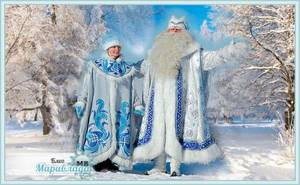
- Try to have fun and be happy on New Year's Eve - then fun and happiness will accompany you all year long.
- There are several signs associated with money. You can't celebrate the New Year without money. If you don’t have them, then it’s better to even borrow them. Place the largest bill under the tablecloth or in your pocket - this will attract money in the New Year.
- It's good to wear new clothes. The sign says that then you will have new things for the next year. Give yourself this gift.
- If you see a homeless hungry animal, give it shelter and food. In the new year you will always have shelter, food, and, of course, happiness!
- Meet with your family, the larger the company, the better. Firstly, the dog does not tolerate loneliness, and secondly, this celebration throughout the world is considered exclusively a family holiday. Tie the table legs with a strong rope - then your family will be strong and friendly.
- In dreams that occur on the last night of the year, there is a hidden hint on how to live next year.
- Try to do all the house cleaning before sunset and don’t wash dirty linen in public, otherwise you may accidentally throw away family happiness and good luck.
New Year's signs
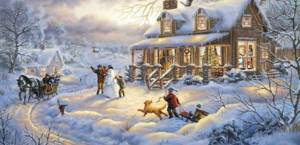
Most of the rituals flowed from Christmas, which was not celebrated during the Soviet period.
- Celebrate the holiday in new things.
- You cannot repay debts on the eve of the celebration, otherwise you will have to do this all year. The same applies to loans.
- They will definitely ask for forgiveness and settle disputes.
- Do not sleep on the holiday night, otherwise the year will pass lazily and sluggishly.
- Fill the table with delicious dishes. Life will be rich.
- On the eve of the holiday, housewives threw out damaged dishes and did general cleaning.
According to modern traditions, New Year and January 1 are celebrated in such a way as to be remembered for the next 365 days.
Aiko Abil, 40 years old, Karaganda, PR

For 20 years now, our family has been celebrating the New Year with my husband’s parents, who live in Kostanay.
Three generations come to this city to celebrate the New Year together. And every year the family grows, children, grandchildren, and a nephew appear. Several times we had to celebrate New Year on the train because we didn’t have time to buy tickets. As a joke, they wanted to make this their tradition.
We gather on December 30th and start preparing.
We cook everything ourselves and never buy food from stores. Together we decorate the Christmas tree and decorate the house. And the first of January is my mother’s birthday, and we go to congratulate my side - nagashilar. The whole family gets together too, and we combine two holidays at once.
For me, this is the best time of the year when we can all get together.
We live in different cities, work and don’t see our family very often. For us, the New Year has a special meaning.
We live in different cities, work and don’t see our family very often.
If children want to celebrate with friends, there are still seven more days to do so. But New Year's Eve is a time when we should be at the same table.
We have a Christmas tree that we bought many years ago. And every year we buy more interesting toys for it.
We prepare our favorite dishes, ask everyone’s preferences so as not to offend anyone. We never sit in front of the TV, and there was no such thing that the New Year was associated with “Blue Light” or other programs.
After the chimes strike, our neighbors may come to visit us.
The fun continues as we walk together up the hill in the city center.
Our common holiday is Nauryz. For the older generation, this is a more significant holiday. Together we prepare our signature Nauryz kozhe and welcome guests.
New Year for me is summing up, analyzing what we have done over the year, what experience we have gained.
On this day we make plans for the future. Be sure to make a wish at midnight. I make a list of goals that I need to achieve. If at the end of the year at least 50-70 percent of the list is successful, then the year is a success.
